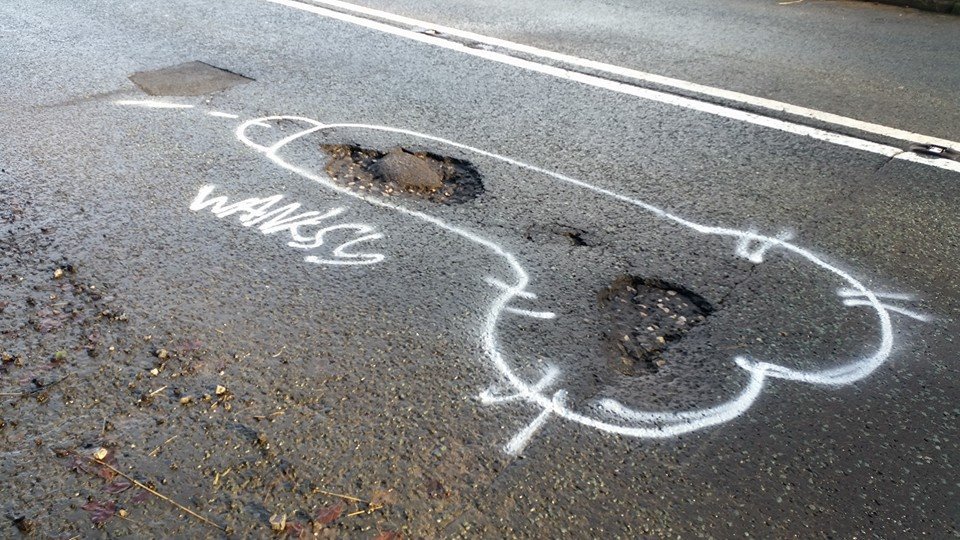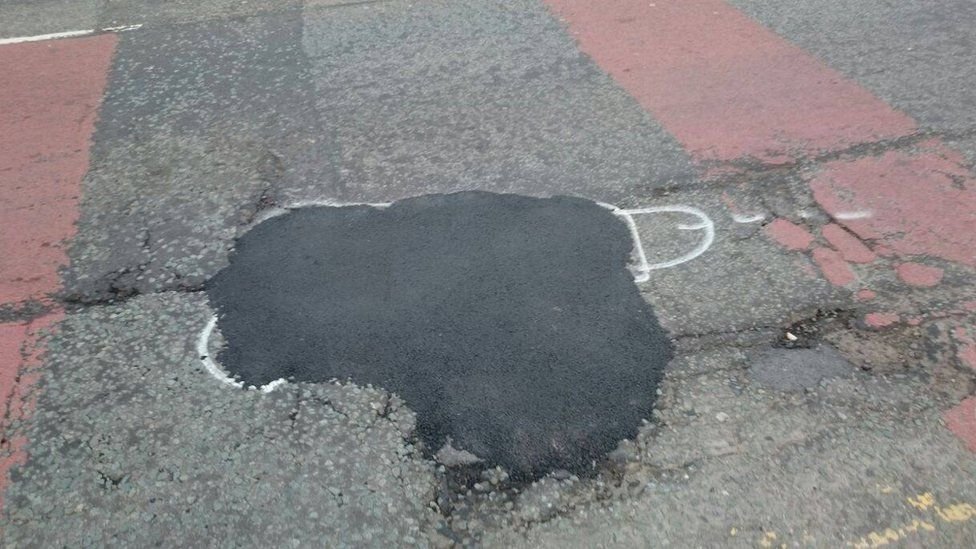Can Art Really Be a Force for Change?
By Olivia Feather-Moore
In 2014, the United Kingdom witnessed the emergence of an unconventional form of street art that left a lasting impression on both the public and policymakers. Prominently displayed around potholes and road hazards in Bury, Ramsbottom, and Greater Manchester, these distinctive works bore the rather rude signature of 'Wanksy.' This pseudonymous artist, not to be confused with Banksy of course, deployed spray-painted penises as a powerful visual statement to draw attention to the lamentable state of the country's road infrastructure and maintenance. By provocatively challenging local authorities to address this issue, 'Wanksy' not only expedited government responses but also ignited a broader societal dialogue on governance, public expenditure, and the tax burden shouldered by citizens.
Since the formation of the 2010 Conservative government, the UK has grappled with austerity, during which citizens have watched their earnings fall into the abyss of taxation, with scant evidence of these funds being reinvested into essential public services and safety measures. One particularly glaring concern centers around the alarming state of the nation's road infrastructure. In an interview conducted by Aarian Marshall for Bloomberg in 2015, Wanksy expressed a sentiment held by many: "There's money there to fix the roads—at least it's taken from us, the taxpayers. But it doesn't seem to get spent on them enough." Employing provocative imagery and direct action, Wanksy garnered significant attention, even capturing the attention of the arbiters of right from wrong; The Sun in 2016. The headline "VULGAR VIGILANTE: Mystery man calling himself 'w**ksy' graffiti's PENISES on potholes so council is forced to fix them," might suggest the public’s outrage with such confrontational, provocative work. However, as the artist protests: "I've yet to meet someone who's offended by it. They're more offended by the council taking the Council Tax, which is supposed to be used to get the potholes fixed, and not spending it to fix them."
Wanksy
Wanksy's artistic interventions serve as an indictment of the council and government's disregard for the welfare of the British public, exposing their distorted sense of priorities. Wanksy aptly points out, "Your car, it costs you an absolute fortune if you hit one. I've known guys who have come off motorbikes. I know guys who have been put in the hospital from hitting them on the bike. They'll cause damage to any form of transport you use on the road—they'll damage it." The Department for Transport (DFT) reveals a concerning trend of the number of potholes and the state of road maintenance significantly deteriorating. In 2015, there were 5,561 reported potholes; this number alarmingly soared to 13,677 in 2019, underscoring the escalating negligence of the government's priorities. Wanksy's artistic crusade illustrates the transformative power and efficacy of art in response to governmental apathy. Wanksy's strategic approach appears to have yielded tangible results, as evidenced by their remark on Facebook alongside a photo of freshly patched-up potholes: "Been there for eight months at least. A bit of art, and they are filled in 48 hours. Who needs canvas with roads like these."
When questioned about the choice of "penises" as the central motif, Wanksy offered a succinct explanation: "I wanted something that would attract attention to the pothole, and nothing's better than a giant comedy penis. They're also quick to draw. And nothing fills holes better, truthfully." Yet, the query persists: why opt for this symbol over potentially more directly relevant images or words? What if, instead of phallic humor, the graffiti depicted a car with a flat tire or a cyclist falling from their bike? The rationale behind this choice intertwines with the essence of why the male genitalia has become one of the most prevalent symbols in graffiti, and arguably British culture, if not emblematic of it. The phallus symbolizes masculinity, and power, and implies a sense of priority, urgency, and significance, even within the context of vandalism. Some may contend that the straightforward answer lies in its explicitness, but this argument falls short when contrasted with images of female genitalia or breasts. The latter symbols, unless connected to a man's interaction with them, are often regarded as uninteresting and insignificant in isolation due to cultural norms induced by the patriarchy. Thus it is the symbol of a penis specifically that makes their work so effective.
Wanksy
The article in question reveals that Wanksy is an English road construction worker with an intimate understanding of the vital role roads play in facilitating public life, and thus recognizes both the significance of well-maintained roads and the perils of neglect. Although where the roads are fixed, and which areas take precedence, is dictated by institutions with power, Wanksy, the ordinary worker who can only abide by instructions, has ingeniously harnessed this artistic insight to engage in local politics and influence decision-making. In such ways, art proves to be a commendable force for change and exposes how ordinary people, in some instances, are able to take advantage of the system.
Whilst in today's current political climate it may seem impossible to make a change and take action, an ordinary construction worker such as Wanksy shows how if you play the system with simple creativity, or as their critics would suggest, “vulgarity”, you can have the power to make a change.
Notes:
Charlie Parker. “Mystery Man Calling Himself ‘W**Ksy’ Graffitis PENISES on Potholes so Council Is Forced to Fix Them”. The Sun, October 30, 2016. https://www.thesun.co.uk/news/2078588/mystery-man-calling-himself-wksy-graffitis-penises-on-potholes-so-council-is-forced-to-fix-them/.
Marshall, Aarian. “An Interview with Wanksy, Penis Doodler and Pothole Avenger”. Bloomberg.com, May 1, 2015. https://www.bloomberg.com/news/articles/2015-05-01/an-interview-with-english-graffiti-artist-wanksy-penis-doodler-and-pothole-avenger.
“Pothole Information”. GOV.UK, August 23, 2021. https://www.gov.uk/government/publications/pothole-information.


